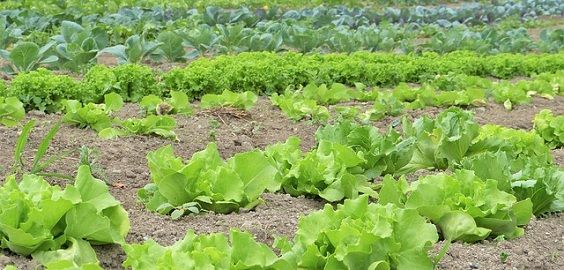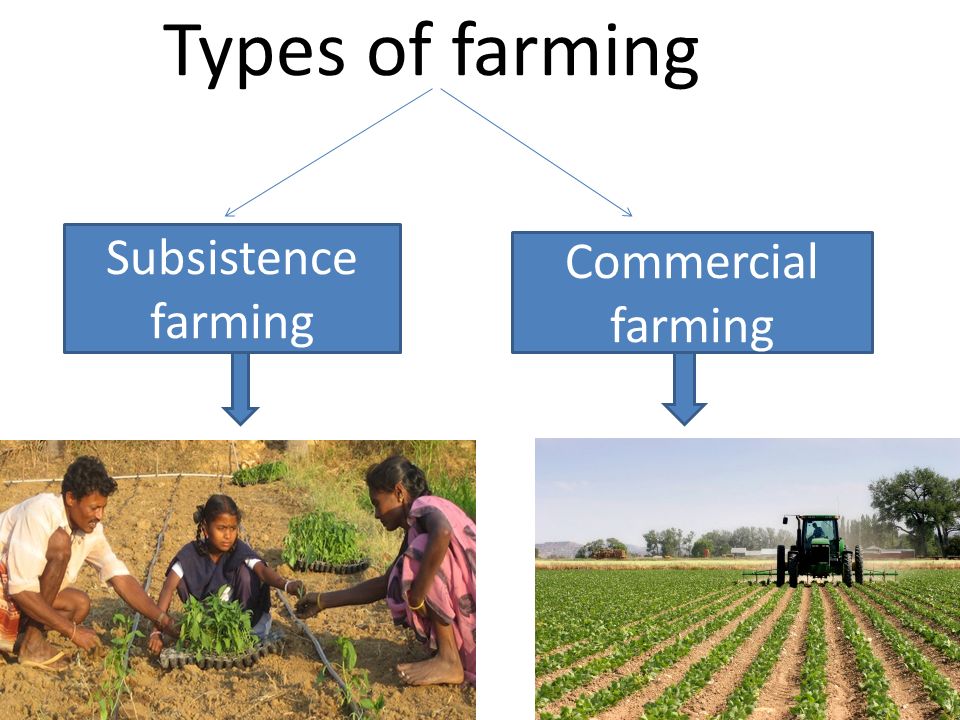How Commercial Farming vs Subsistence Farming Affects Food Safety And Security Worldwide
How Commercial Farming vs Subsistence Farming Affects Food Safety And Security Worldwide
Blog Article
A Comprehensive Take A Look At the Challenges and Benefits of Modern Agriculture
Modern agriculture stands at the crossroads of innovation and sustainability, presenting a wide range of opportunities and obstacles. The course onward demands a mindful assessment of these characteristics, inviting stakeholders to consider the possibility for transformative modification in farming techniques and policies.
Technical Improvements in Farming
Technologies such as precision biotechnology, agriculture, and automation have actually changed conventional farming methods, permitting for more successful and lasting operations. Precision agriculture uses GPS innovation, sensing units, and information analytics to optimize field-level management relating to plant farming.
Automation in farming has actually further pushed the market onward, with the intro of independent tractors, drones, and robotics. These technologies lessen labor demands and raise functional rate, permitting prompt growing and harvesting. Drones, particularly, give beneficial airborne images and information, aiding farmers in monitoring crop health and discovering problems early.
Biotechnology has additionally played a pivotal role beforehand agricultural methods. Genetically customized microorganisms (GMOs) have been developed to boost plant resistance to illness and insects, lower reliance on chemical therapies, and enhance nutritional web content. This modern technology adds to food security and fulfills the needs of a growing global populace. Jointly, these technological improvements have laid the groundwork for an extra resistant and sustainable agricultural future.
Environmental Obstacles
Farming faces numerous environmental obstacles that intimidate its sustainability and productivity. The lasting viability of farming land is endangered, necessitating the fostering of even more sustainable methods.
Water deficiency is another considerable obstacle, especially in regions where agriculture greatly depends on irrigation. Environment change is escalating this issue, changing rainfall patterns and boosting the regularity of dry spells. Reliable water management systems, such as drip irrigation and rainwater harvesting, are essential to reduce these impacts, however their application stays irregular throughout various areas.
Additionally, farming is both a target and a factor to climate change. It accounts for a substantial share of greenhouse gas discharges, mainly from livestock production and rice cultivation. Transitioning to low-emission farming techniques, such as accuracy farming and agroforestry, can assist minimize this effect. Nevertheless, these techniques require significant investment and technical competence, presenting an obstacle to extensive adoption. Addressing these ecological difficulties is important for ensuring a lasting agricultural future.

Economic Effects
The financial influences of modern agriculture are multifaceted and profound, affecting both neighborhood and global markets. Developments in technology and production techniques have actually significantly enhanced agricultural efficiency, leading to extra efficient food supply chains and reduced expenses for consumers.
The capital-intensive nature of modern-day farming calls for substantial financial investment in equipment, fertilizers, and genetically customized seeds, which can be economically troublesome for small-scale farmers. Additionally, global market variations can influence the productivity of farming exports, making economies i loved this reliant on agriculture susceptible to financial instability.
Furthermore, subsidies and trade policies in developed nations can misshape market value, affecting competitive equilibrium and potentially disadvantaging farmers in developing nations. Generally, while contemporary agriculture drives financial growth, it also necessitates browsing complicated economic landscapes to make sure fair and lasting development.
Social Effects
While modern-day farming has produced significant improvements, it also offers various social ramifications that necessitate consideration. One major concern is the displacement of small farmers as a result of the rise of big agricultures. As company farming entities increasingly dominate the farming landscape, smaller sized farms usually struggle to contend, bring about the disintegration of rural neighborhoods and typical farming practices. This shift can lead to a loss of neighborhood knowledge and cultural heritage that smaller ranches maintain.

Such methods may likewise restrict customer options and lower the capability of regional areas to manage their food resources. As these social ramifications unravel, it ends up being important to address them to ensure fair and sustainable farming advancement.
Future Directions
Looking in advance, several encouraging opportunities for modern-day agriculture can deal with the obstacles dealt with today while cultivating sustainable development. Advancements in modern technology, such as precision farming, provide the possible to optimize source use and boost efficiency. By utilizing information analytics and artificial intelligence, farmers can make enlightened decisions relating to plant management, leading to minimized input prices and reduced ecological influence. Additionally, the assimilation of renewable energy resources right into agricultural methods can substantially reduce dependency on nonrenewable fuel sources and add to lower greenhouse gas exhausts.
Biotechnology also holds immense guarantee for the future of agriculture. Genetically modified organisms (GMOs) and genetics editing strategies, like CRISPR, can boost plant durability against climate change, pests, and diseases, thus improving food safety and security. great post to read Expanding plant selections to consist of more climate-resilient and nutrient-dense options could strengthen both environmental stability and human nutrition.

Verdict
Modern farming, defined by technological developments, offers both possibilities and difficulties. While technologies such as accuracy farming and biotechnology enhance performance and sustainability, they additionally contribute to environmental concerns like soil degradation and water deficiency. The financial impacts are substantial, impacting small-scale farmers and leading to broader social effects. Dealing with these complexities needs a transition in the direction of sustainable techniques that stabilize productivity with ecological stewardship and social equity, thus ensuring a resistant future for global farming systems.
Modern agriculture stands at the crossroads of development and sustainability, presenting a plethora of chances and obstacles. Additionally, worldwide market variations can influence the productivity of farming exports, making economies reliant on agriculture prone to economic instability.
Additionally, the extensive use of modern technology and automation in agriculture has led to a reduction in farming work possibilities.Looking in advance, several promising opportunities for contemporary farming can resolve the challenges faced today while fostering sustainable growth. commercial farming vs subsistence farming.Modern agriculture, defined by technological improvements, offers both possibilities and obstacles
Report this page